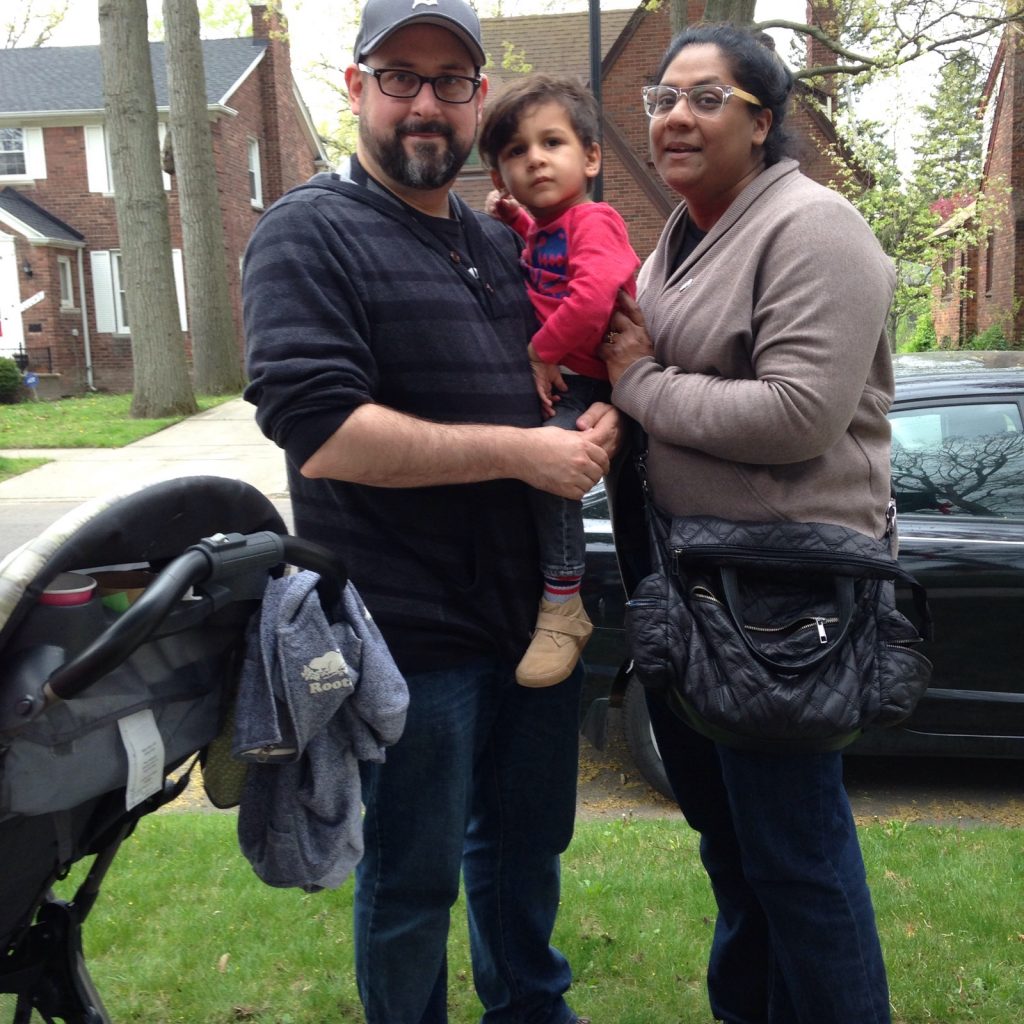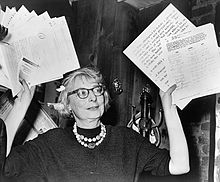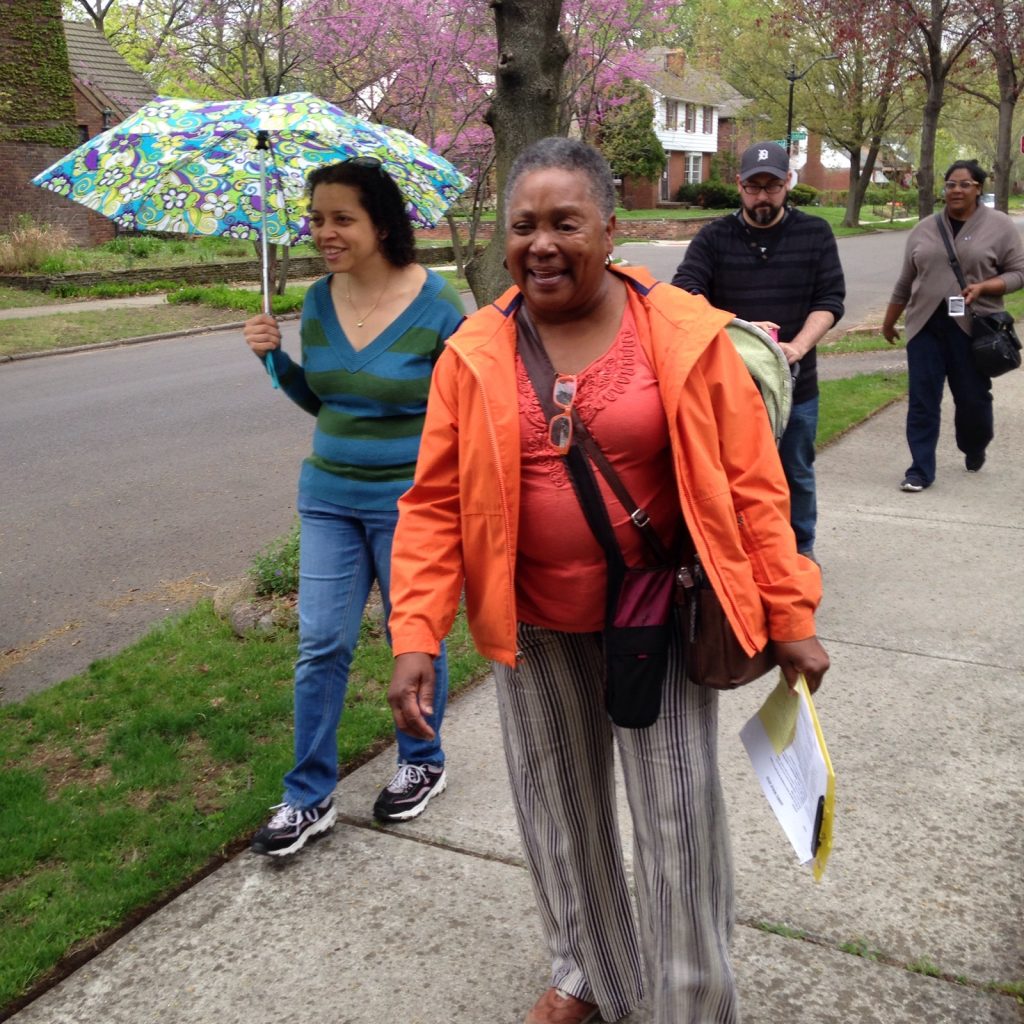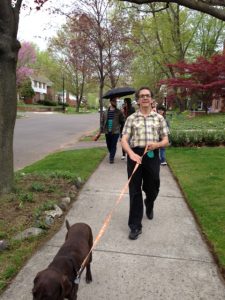Raindrops fell and people walked gingerly in the Greenacres-Woodward community in northwest Detroit, but the lessons in urban sanity shined bright for the dozen people participating in Jane’s Walk on May 7.
“This is our fourth Jane’s walk in Greenacres, the second this year, we love the energy,” said Madhavi Reddy, a neighborhood resident and transplant from Toronto who works for an organization called Advocates of Detroit. She came with her husband, Jason Seifert, and two-year-old son.

The walk in Greenacres, organized by Mark Loeb, who is also putting on the Palmer Park Art Fair in Palmer Park next weekend, is one of 10 free walks in honor of the 100th birthday of Jane Jacobs. Walk organizers recruit people like Dwight and Sandi Kirksey to speak about their contributions and how it helps stabilize their block.
Jacobs was an influential author of The Death and Life of Great American Cities, and subject of two new biographies, a documentary film, even an opera, “A Marvelous Order.”
Jacobs, a Greenwich Village, New York resident, was a firm believer in walking neighborhoods, stopping to chat with homeowners and learning their stories. She believed in planting flower, painting shutters and creating useable pathways as means of revitalizing blocks. Because conversations are the link to rewarding communities.

“We told people about our annual Christmas party,” says Sandi Kirksey.
People gather on the third Friday of December to go caroling up Lichfield to a home half way along the route for hot toddies and cider, then they head back to the home she and her husband have shared for three decades to enjoy a potluck meal.
Each year the youngest child runs up to doorsteps and asks if people want a song sung by a choir of neighbors. Most are happy, but one resident – now vanished – planted a “Bah humbug” sign and told them to go away. It brought laughter among the singers, who come, snow, sleet or decent weather, on this one day.
Sandi and Dwight Kirksey put out a Christmas tablecloth, pine scented candle and copies of the caroling tunes for people to enjoy. She noted up to 60 people come caroling, depending on weather. The Kirksey’s make lasagna, black bean soup and rum cake. Others supply everything else.
“We’ll have our 30th party this December. People count on it because it brings us together as a neighborhood. The conversations are loud and convivial. Everyone loves it,” she says, noting her sister comes from Santa Monica, Calif. to join the festivities each year.

Throughout the city people talked about the way neighbors come together and share their urban experience. People from Midtown and East English joined the walk.
Groups included the Cass Corridor, Greenacres, Live 6 (University District), Osborn, Focus:HOPE/HOPE Village, Roosevelt Park, Boston-Edison and North End. Walk leaders included Quincy Jones, David Baker, Joe Rashid, Dana Hart, Barbara Jacobson, Michael Mowers and Tina Patterson and Ernie Zachary.
“More than 200 people came to the first walk in Greenacres/Sherwood Forest,” recalls Reddy, who was a new neighbor then and delighted with turnout. “Vickie Elmer and Mark Loeb were long-time advocates of Jane Jacobs’ work and hoped to start the walk tradition on the first Saturday of May. A front page story on the walk helped boost attendance. We were thrilled.”
Jacobs would be thrilled to know her work is still celebrated, that people throughout Detroit and around the nation are seeking to protect neighborhoods from slum clearance and expressways that mowed through communities. She was a true advocate of “eyes on the street,” the role that mothers with baby carriages, young people on bikes and postal workers with sacks of mail play in stabilizing communities and identifying suspicious elements.

She had particular disgust for the celebrated Robert Moses and his plan to overhaul Greenwich Village, according to Wikipedia. She called for respect of the neighborhoods, the messy, imperfect joining of real people around real urban goals.
From the Death and Life book, Jacobs said, “The best way to plan for a neighborhood is to see how people use it today, to look for its strengths and to exploit and reinforce them. There is no logic that can be superimposed on the city> People make it, and it is to them, not buildings, that we must fit our plans.
“This does not mean accepting the present. The city does need an overhaul. It is dirty. It is congested. But there are things that are right about it too, and by simple old-fashioned observation we can see what they are. We can see what people like.”


